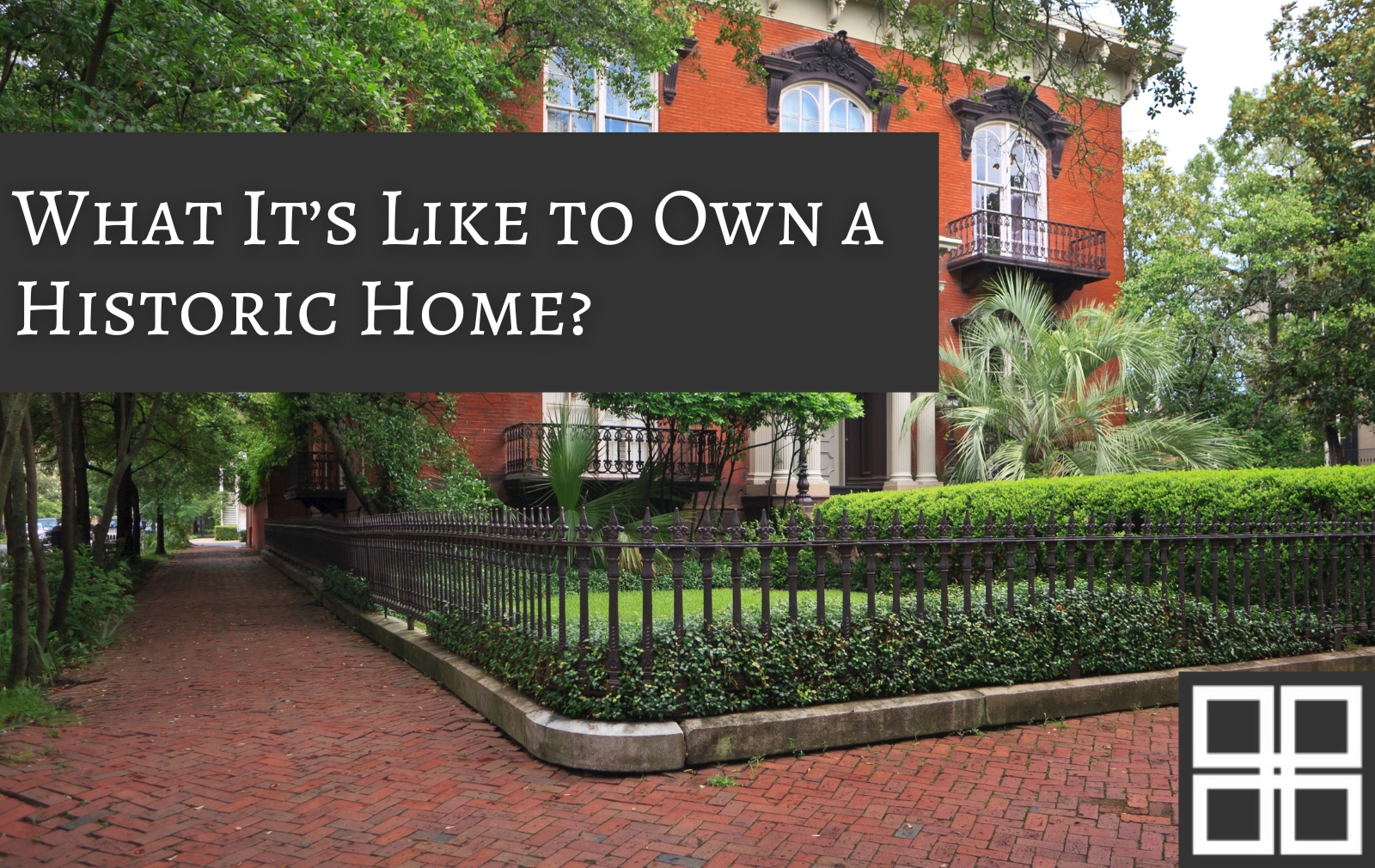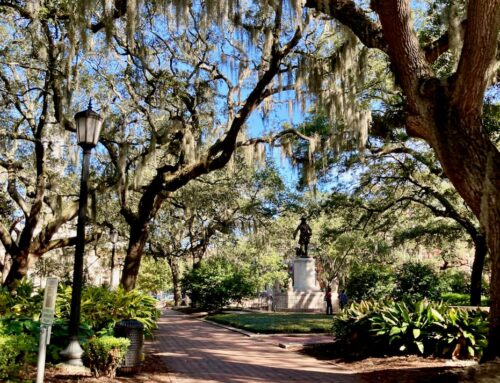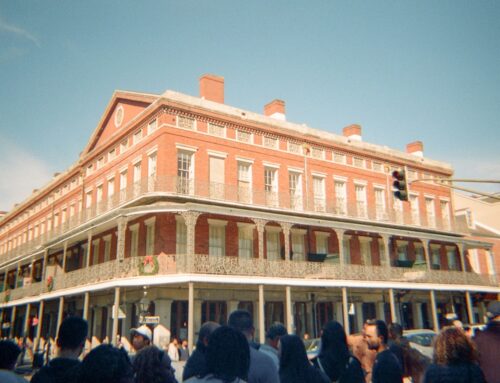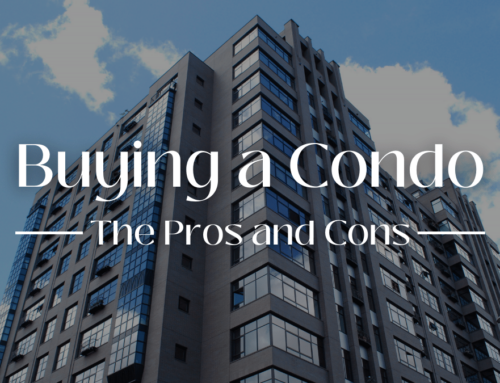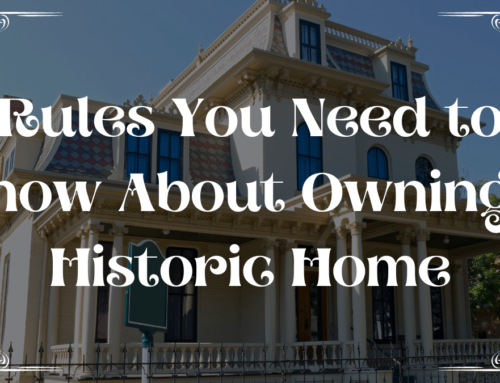What It’s Like to Own a Historic Home
Ever wandered through Savannah’s oak-lined streets and wondered what it’s like owning a historic home in Savannah? The allure is undeniable – ornate ironwork, grand porches, and stories seeping from every aged brick. Buying or owning one of these gems means living in a piece of history, but it also comes with unique responsibilities. In this 2025 refresh, we’ll explore how Savannah’s historic home market is trending, what preservation rules owners must follow, the realities of upkeep in our Southern climate, financial pros and cons (yes, landmark tax credits!), and what both buyers and current owners can expect from life in Savannah’s storied neighborhoods.
Savannah’s Historic Homes: A Living Legacy in High Demand
A row of classic historic townhomes in Savannah’s Historic District, featuring wrought-iron railings and inviting stoops. Savannah’s historic homes aren’t just beautiful relics; they’re hot properties in today’s market. In recent years, demand has surged as both local residents and out-of-state buyers vie for the chance to own a piece of Savannah’s rich history. The limited supply and the city’s timeless appeal have led to steadily climbing prices. The median listing price in Savannah’s prestigious South Historic District reached around $1.9 million in early 2025 – a staggering 52% jump from the year before.
Even the more modestly priced historic enclaves see values inching up year over year. It’s a classic case of supply and demand: there are only so many 19th-century townhouses to go around, and everyone wants one. As one local real estate report notes, a “limited supply of historic homes combined with increasing demand” often creates a seller’s market. In short, historic homes here command premium pricing thanks to their character and location.
Why Historic Homes Are So Sought-After

Current owners will tell you that there’s a real pride (and yes, a bit of bragging rights) in being a steward of one of these landmark properties. In Savannah, historic homeowners often find themselves part of a close-knit community of preservationists, and the neighborhoods themselves are culturally rich and active. It’s common to have community events, tours, and friendly neighbors who swap contractor tips and local lore. The bottom line: the romance of Savannah’s historic homes is alive and well – and so is the competition to own them.
Preservation Guidelines: Navigating the Rules and Regulations
Fallen in love with a Victorian townhouse or a Greek Revival cottage? Before selecting new paint colors for those gingerbread trim details, you’ll need to know the rules. Savannah takes historic preservation seriously – it’s a big part of what keeps our city’s charm intact. Both city and state guidelines protect landmark properties, and as an owner, you’ll be living with some extra rulebooks (don’t worry, they’re manageable!).
Understanding Historic Designations
Some homes are listed on the National Register of Historic Places, while others may be designated at the state or local level. In Savannah, much of downtown is part of a local Historic District. What do these labels mean for you?
To be considered “historic,” a property must have three essential attributes: sufficient age, an above average degree of physical integrity, and historical significance. These attributes can be managed by one, or all, of the following:
- National Historic Landmarks (NHLs) NHLs are places having the strongest association with a significant event or individual in our nation’s history. They are often an exceptional representation of a particular building type or architecture.
- State Registers These registers provide an important planning tool for homeowners. They identify properties for protection against potentially harmful government acts and for special funding and other incentives.
- Local Registers Some communities have put greater protections in place by enacting a preservation ordinance. These ordinances create a process by which properties may be designated as individual landmarks or as contributing structures within a historic district.
On a practical level, if your home is located in a designated historic district or is a recognized landmark property, any exterior changes typically require approval from the city’s preservation authorities. The Savannah Historic District Board of Review, along with the Historic Preservation Commission, will require you to obtain a Certificate of Appropriateness (COA) for “all exterior changes visible from the public right-of-way.” In plain terms: you can’t just slap up new windows or alter the front porch without getting the green light first. These rules ensure that renovations don’t erase the very character that makes your home historic.
Interior Freedom vs. Exterior Restrictions
What about interior updates? The good news is you have a lot more leeway inside your home. You can modernize the kitchen or add a bathroom, and preservation boards won’t usually dictate interior decor. However, owners (and buyers) should be prepared for the fact that older homes often require interior upgrades, such as replacing knob-and-tube wiring, updating outdated plumbing, or improving inadequate insulation. Bringing a 1900-built home up to 2025 standards can be a project. As one guide notes, interior renovations may require updating key systems, such as wiring and plumbing, which can be more costly and time-consuming than expected.
Navigating Multilevel Preservation Guidelines
City, state, and you: Savannah’s local preservation ordinance is your go-to rulebook, but Georgia state guidelines play a role, too. Georgia’s State Historic Preservation Office (SHPO) oversees the Georgia Register of Historic Places and collaborates with local communities to preserve and protect historic sites.
Suppose your home is listed on the Georgia or National Register and you plan a major rehabilitation. In that case, you will want to follow the Secretary of the Interior’s Standards for Rehabilitation, which serve as the best practices for historic rehabilitation. Not only will this keep the history police happy, it’s also typically required if you want to qualify for those juicy tax credits (more on that soon).
Remember, being listed on the National Register by itself doesn’t handcuff what you do with your home – many people don’t realize it’s largely honorific. It’s the local designation and zoning that carry legal restrictions. Savannah’s preservation staff and the Historic Savannah Foundation are excellent resources to help owners navigate what’s allowed. When in doubt, reach out – they can guide you on everything from selecting the right paint colors to window restorations. The goal is to help you preserve the charm that drew you in, while still allowing the home to evolve with you as the next chapter in its story.

Maintenance Realities in the Southern Climate: It’s a (Humid) Labor of Love
Owning a historic home in Savannah is often described as a “labor of love,” and nothing proves that like the ongoing maintenance. Our coastal Georgia climate is beautiful – sultry summers, mild winters – but it can be tough on old houses. High humidity, heat, and occasional storms mean you’ll be doing battle with moisture and Mother Nature to keep your historic beauty in top shape.
The Humidity Factor: Your Home’s Biggest Challenge
Savannah’s air can feel like a warm hug… or a wet blanket, depending on the season. From May through September, the average humidity often hovers around 50% and can rise to as high as 90% on steamy summer days. That kind of moisture is trouble for both old and new houses, but historic homes, with their aged wood and plaster, are especially vulnerable. Humid environments are a breeding ground for mold and mildew. Don’t be surprised if a savvy Realtor asks about when you last had your crawl space encapsulated or if you run dehumidifiers – it’s that important.
As a historic homeowner (or soon-to-be one), plan on investing in moisture control. This could involve installing dehumidifiers (a must for enclosed crawlspaces in Georgia), ensuring adequate ventilation, and regularly inspecting for any leaks. It’s amazing what a little caulk and timely roof repairs can prevent in terms of rot and water damage. Current owners will nod in agreement: vigilance is key. If you keep on top of small issues, you avoid big headaches down the line.
Quirks and Upkeep of Old Construction
Historic homes have already stood for a century – they will have quirks. Embrace them, but also maintain them. Those charming original hardwood floors may not be perfectly level; in fact, one local agent quipped that walking through some historic homes “is sometimes just like being on a roller coaster because of floor slope”. Slightly slanting floors and wavy glass window panes are part of the package.
The materials and techniques used a hundred years ago were built to last, but time and Savannah’s shifting ground do take a toll. You may notice cracks in plaster or doors that don’t shut completely square – often harmless, but worth monitoring. Expect to repaint more frequently, too: our humid climate can cause paint to peel faster, and historic homes usually feature wood siding that requires regular maintenance.
Pest Management in Historic Homes
Pests love older homes as much as we do. Termites in particular are common in the South (Savannahians know that a termite bond is practically a must-have). Regular pest inspections and treatment are just part of the annual to-do list.
Finally, remember that “old” doesn’t mean “run-down.” With proper maintenance, historic homes can be just as comfortable and structurally sound as any new build – sometimes even sturdier, thanks to the use of old-growth timber and high-quality masonry. It’s all about proactive care.
Many owners develop a seasonal routine: checking the roof before hurricane season, cleaning out those gorgeous but clog-prone copper gutters, servicing the antique (or updated) HVAC system before the summer heat, and so on. If you’re handy, you’ll have plenty of projects to keep you busy. If you’re not, it’s wise to line up trusted contractors who have experience with historic buildings. And yes, those specialists might cost a bit more and be booked out – finding the right help for an old home can take patience. But when your 120-year-old porch is freshly painted and your home is looking as grand as ever, you’ll feel that the effort is well worth it.
The Dollars and Cents: Financial Pros and Cons of Historic Homeownership
Let’s talk money. Historic homes in Savannah can come with financial surprises – some are a blessing, while others are not so fortunate. On one hand, you have access to incentives that can ease the burden of restoration and preservation. On the other hand, you may incur higher ongoing costs for items such as insurance and maintenance. Whether you’re a prospective buyer crunching numbers or a current owner planning your budget, here’s the rundown:
Financial Perks (Yes, There Are Grants and Tax Credits!)
Historic Rehabilitation Tax Credits
Georgia offers a fantastic incentive for historic homeowners. If you undertake a substantial rehabilitation of a historic home (say, updating that 1880s townhouse in need of love), you can apply for a 25% state income tax credit on qualified expenses. For a primary residence, the credit is capped at $100,000 – nothing to sneeze at! This is essentially money back in your pocket at tax time for doing the right thing by your old home.
There is also a federal rehab tax credit (20%), but it primarily applies to income-producing properties. Therefore, if you plan to run a B&B or rent out a historic property, this credit may be applicable.
Many homeowners also don’t realize that Georgia has a Property Tax Assessment Freeze program. After completing a certified rehabilitation, your county property tax assessment can be frozen at the pre-renovation value for 8 years, with a gradual phase-in after that. This can result in significant savings, preventing your property taxes from skyrocketing due to the improvements you’ve made. Essentially, the state wants to reward you for preserving history.
Grants and Assistance Programs
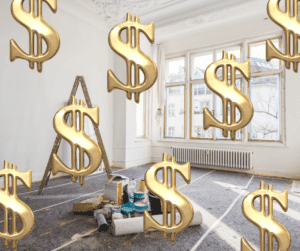
While you shouldn’t rely solely on free money, grants are available. The National Park Service, for example, has Historic Preservation Fund grants that sometimes assist with restoration of nationally significant properties. Closer to home, organizations like the Historic Savannah Foundation (HSF) offer guidance and sometimes provide small grants or low-interest loan programs to help save historic structures.
HSF’s famous revolving fund has helped rescue many a Savannah home – they buy endangered historic properties, place protective covenants, and resell them (often at favorable prices) to preservation-minded buyers. If you’re restoring a home in a designated historical neighborhood, you may also be eligible for local grants or incentives. Occasionally, the city offers facade improvement programs or credits for renovating older homes in specific districts. The key is to do your research and ask questions. Preservationists love to help fellow old-home lovers find resources.
Insurance and Lending Benefits
Some insurance companies offer discounts for historic homes that have been updated with modern electrical and plumbing systems, as this reduces the risk of fire or water damage. Additionally, if your home is located in a historic district with a strong track record, lenders may recognize that these areas retain their value well, which can be a plus in securing financing.
And let’s not forget resale value – if you take good care of a historic home, it often appreciates significantly over time due to the limited supply and high desirability, as we discussed earlier.
Financial Challenges to Expect
Higher Upkeep and Repair Costs
As noted, maintaining a historic home is generally more expensive than maintaining a newer one. You may spend more on materials that match the historic character (such as true wood windows versus vinyl, custom-milled trim pieces, etc.), and labor costs can be higher for craftsmen who are skilled in traditional building techniques.
It’s wise to budget an annual maintenance fund – unexpected repairs will inevitably arise, whether it’s a section of an old roof needing replacement or discovering that you need a whole-house rewire sooner than planned. Renovations can also take longer and cost more than equivalent work in a modern home, due to the need for specialists and sometimes the discovery of issues, such as old asbestos wrapping on ducts or hidden water damage, mid-project. As one homeowner wryly put it, “Hope for the best but plan for the worst” when budgeting for historic renovations.
Insurance Costs and Requirements
You’ll likely find your insurance premium higher for an older home, partly because the cost to rebuild or repair with similar materials can be higher. Some insurers may require a special rider or policy for historic homes, and certain coverages, such as those for old wiring or flood (if you live in a low-lying area), are crucial.
In some cases, you may even need specific coverage for things like mold remediation or fire, given the materials in historic houses. Shop around for an insurance agent who has experience in historic properties; they can ensure you’re adequately covered without paying for coverage you don’t need.
Property Taxes and Appraisals
If your historic home is located in a prime downtown area, be prepared for higher property taxes due to the increased land value and desirability. However, as mentioned, Georgia’s preferential assessment program can be beneficial if you undertake a major rehabilitation project.
On the other hand, some historic homeowners have found that because their home required work when they purchased it, their appraisal (and thus their taxes) remained reasonable until the necessary improvements were made. It really varies, but plan for taxes to be a factor in your carrying costs, especially in Savannah’s Historic District, where values are high.
In summary, owning a historic home is a financial commitment – but it’s not all cost with no benefit. There are tangible financial incentives to restore and preserve, and many owners will tell you that the intangible benefits —enjoying a sense of history, being part of a community, and taking pride in stewardship —make the dollars spent worthwhile. Just go in with eyes open and wallet prepared, and lean on the available programs to help offset the costs of keeping your historic treasure shining.
Life in Savannah’s Historic Districts: What Buyers and Owners Can Expect
What is it really like to live in Savannah’s famed historic neighborhoods day-to-day? For prospective buyers, it’s important to set realistic expectations, and for current owners, sharing the joy and the occasional drawbacks of the lifestyle is often a point of pride.
A Unique Community Vibe
When you buy a historic home here, you’re not just getting a house, you’re joining a community of fellow history lovers. There’s a strong sense of camaraderie among Savannah’s historic homeowners. Neighbors swap advice on paint colors that satisfy the Historic Review Board, trade stories of their home’s past inhabitants, and band together to support preservation causes.
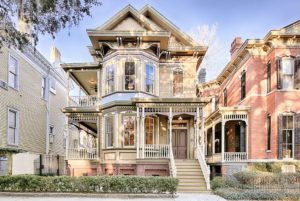
Residents often joke that living in the Historic District is like being a part-time tour guide; don’t be surprised if tourists stop to snap photos of your beautifully restored facade, or even ask you about the house during their ghost tour! Yes, Savannah’s haunted history is a fun element – some owners embrace it and can recount a ghostly tale or two, while others just roll their eyes at the notion.
Historic Charm Meets Modern Living
Buyers coming from modern suburbs might need to adjust their expectations. Historic homes typically aren’t open-concept – they have defined rooms, formal parlors, and cozy spaces. Closet space might be limited (Victorians didn’t have our shoe collections!), and you won’t find a three-car garage out back. Instead, you trade those in for things like a secret garden courtyard or original clawfoot tubs.
Many owners opt for a more creative approach rather than trying to force a modern layout – for example, utilizing armoires for storage or repurposing a small bedroom as a walk-in closet or home office. It’s possible to have modern amenities in historic homes – many have been updated with gourmet kitchens and luxury baths, just within the envelope of an old design.
Prospective buyers should also be aware that any significant changes, such as knocking down walls or making expansions, may be limited by preservation rules or structural realities. Before making an offer, we highly recommend reviewing our guide to historic home inspections to avoid costly surprises. Sometimes renovations may not be possible at all if they compromise the structure, so you learn to work with what you have. In return, you get the character that no new build can match.
Traffic, Parking, and Daily Life
Living in a popular historic neighborhood means you’ll have tourists, college students, and all sorts of activity around. Most find it enjoyable – there’s always something going on and great people-watching – but it can mean parking on the street (welcome to the world of parallel parking) and keeping your garden camera-ready at all times.
Savannah’s downtown is pretty peaceful at night, but events like St. Patrick’s Day (a big deal here) will bring crowds near your doorstep. Current owners often become experts at navigating the city’s ebb and flow of visitors.
Additionally, expect that your home will require a bit more attention to security and upkeep, simply because it is older and possibly more centrally located: sturdy locks, perhaps an alarm, and a plan for hurricane season preparation (such as having shutters or storm panels for those large windows).
The city services in historic areas are fairly robust, and the municipality works with neighborhoods to maintain the cobblestone streets, gas lamps, and parks that make the area special.
The Rewarding Parts
Ultimately, ask any historic homeowner and they’ll tell you the same thing: the rewards far outweigh the inconveniences. The quote “labor of love” comes up often for a reason.
Waking up in a home with 100 years of stories, walking your dog through a picture-perfect square, chatting with tourists who admire your front porch – it’s a daily charm that never quite wears off. You also have the satisfaction of knowing you’re preserving a little piece of history for future generations. There’s real pride in that.
Many buyers are drawn by this sense of being part of Savannah’s legacy, and owners feel a responsibility (in a good way) to care for their home and by extension, the whole neighborhood’s historic fabric. These districts are living museums, but also very much living – full of families, professionals, retirees, and newcomers all committed to the city’s heritage.
Your Savannah Story Awaits: Make History Your Home
Owning a historic home in Savannah is not just a real estate investment – it’s a lifestyle and a commitment. You’re signing up to be a storyteller, a preservationist, and a neighbor in one of the most charming communities in America.
There will be hot summer days when you’re crawling under the house to check for termites, or nights when you’re researching Victorian-era paint palettes to satisfy the Historic Board. But there will also be moments when you’re sipping sweet tea on your 19th-century porch, watching the Spanish moss sway, and thinking “this is my home – and it’s truly special.”
If you’re considering making the leap into historic homeownership – or if you’re a current owner looking for guidance – the journey is easier with an experienced guide. The Heather Murphy Group has helped many buyers and sellers navigate Savannah’s historic real estate landscape. Whether you’re dreaming of restoring a faded beauty or buying a move-in-ready masterpiece in the Historic District, we’re here to offer local expertise with a friendly, confident touch.
Ready to write your own chapter in Savannah’s rich history? Contact us today, and let’s find your perfect historic home or help you make the most of the one you own. Your Savannah story awaits!



